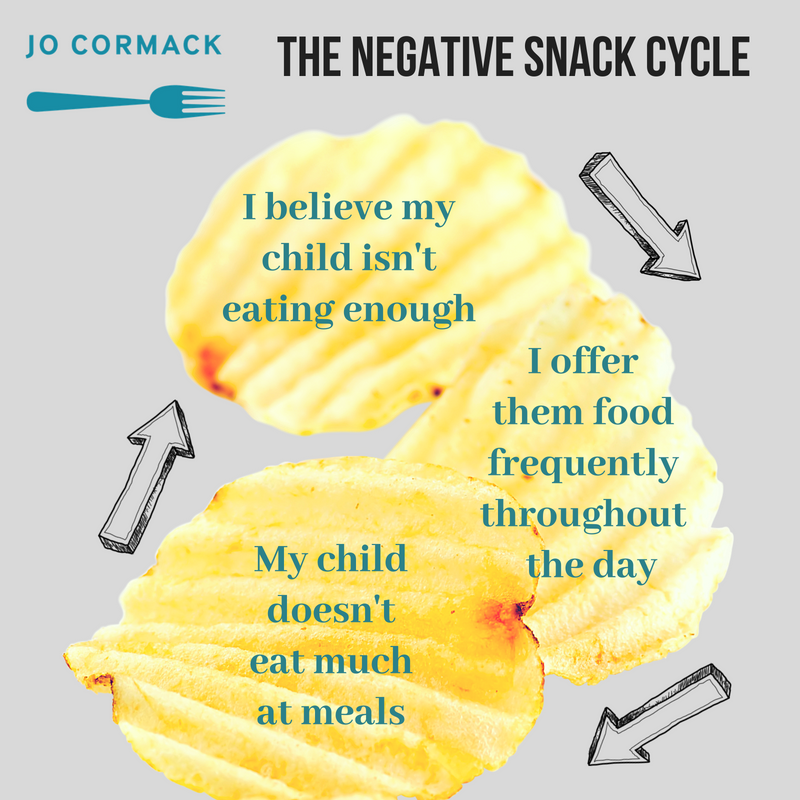How to recognise (and move out of) a negative snack cycle
As a therapist, I am really interested in why we approach feeding in certain ways; in the beliefs, thoughts and feelings that drive our actions. This article is not about why I don’t recommend a grazing pattern of feeding children ( grazing means providing lots of frequent eating opportunities). I have written about that here.
Instead, I am focusing on what gives rise to excessive snacking in the first place.
Having worked with many families of picky eaters over the years, I have often seen a negative snack cycle which is easy to get into but harder to get out of.
You believe your child is not eating enough so you offer food at every opportunity. Your child is not eating well at meals because their appetite is masked by these frequent, small eating opportunities. And so it goes on.
I could tell you to just stop offering food outside scheduled meals and snacks. I could tell you to stop giving your child food whenever they ask for it; another thing that parents are often drawn into doing because they are quite simply desperate for their child to eat something. However, saying “do it like this, not like that” doesn’t help people modify their behaviour. We need insight into why we do what we do, in order to make lasting changes.
Gaining insight
Here are some examples of thoughts, feelings and beliefs which I invite you to interrogate in relation to letting your child graze. Do any of these apply to you?
Thought: “I don’t think my child has had enough to eat”
Challenge: Is this true? Can you trust them to make their own eating decisions? Have you looked at what they are consuming over a whole day or even a few days, rather than at an individual meal?
Feeling: “I feel worried about my child’s health”
Challenge: Do you have grounds for concern? Has a health professional told you they are underweight / lacking in nutrients / unhealthy?
Belief: “It is my job to get my child to eat more”
Challenge: Is it? Or is your job to help your child learn to self-regulate and make their own eating decisions? Can you simply set an appropriate structure and then leave it to your child to choose how much they eat?
Analysing your motivations
If you are serious about getting to grips with what drives you to offer food in the way that you do, try getting a piece of paper and writing three vertical lists, one for thoughts, one for feelings and one for beliefs. We’re looking at behaviours here too… in the left hand margin, write down what you do (eg. ‘give my child a cracker because they ask for one’, or ‘offer my child some raisins as they play’). Then fill out the thoughts, feelings and beliefs that go along with that behaviour. Try to include all those different scenarios where you give your child food outside a set meal / snack schedule.
You can even approach this exercise like a journal. Without deviating from your normal habits, for one week, note down each time your child ate (apart from scheduled meals and snacks), filling in the other columns in ‘real time’.
Next steps
You might be interested in a short quiz I have put together for my newsletter subscribers. You can sign up for my newsletter using this link (you will find a link to the quiz in your welcome email) The quiz will help you think about whether you may have a problem with grazing in your family. If you feel that you do, you can find some gentle ways to replace grazing with an age-appropriate meal and snack schedule, here.

